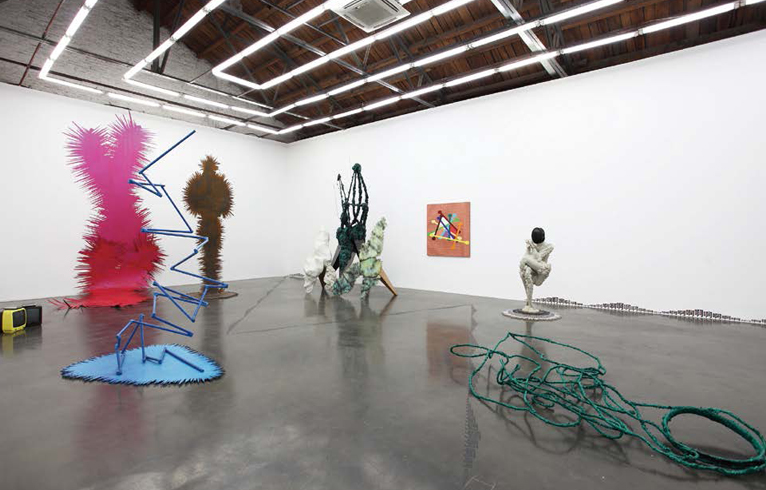ZHAO YAO: YOU CAN’T SEE ME, YOU CAN’T SEE ME
| October 18, 2012 | Post In LEAP 16

Zhao Yao’s latest solo exhibition, “You Can’t See Me, You Can’t See Me,” is an almost total replication of last year’s “I Am Your Night.” It would be easy to take this exhibition as one-time-only event, a disposable strategy; such an opinion would not be baseless. “You Can’t See Me” is a direct attack on the exhibition system and contemporary art production. It is not particularly fresh, nor is it difficult to comprehend. Its effectiveness is closely related to the present environment. The exhibition can be seen as an active response to the sluggish, pressurized status quo, pronouncing a warning without breaking the rules. Zhao puts a variety of questions on the table, from the issue of newness in contemporary art to the significance of duplication, serving as starting points for deeper discussions. Upon closer inspection, Zhao’s courage lies not in his grievances with the exhibition mechanism, or in the risk of raising doubts and conspiracy theories—well-trained audiences are unlikely to be moved, and anyway, perceptible, surface-level “newness” is not a necessary condition of contemporary art discussions— but in the bold, inward-looking move of putting himself on a point of no return: where can one go from there? This easy escape serves as the starting point for a more challenging artistic journey.
Of course, no exhibition is truly a matter of life and death, and artists should not imprison themselves within a single logic. Here, the artistic practice of GUEST, a small collective of artists including Zhao Yao, must be considered. As a group, GUEST has been able to conduct many experiments with a certain kind of openness, allowing Zhao to move forward with his own ideas within a dynamic, vigorous process of unceasing action and feedback. But when “action” itself becomes a kind of affirmation, those within it must ask themselves if active participation alone can satisfy their curiosity and conscience. Whether it is the staging of artistic happenings or the production of new ideas, the original “aspirations” often fade away in the name of “action.”
It is worth remembering that “You Can’t See Me, You Can’t See Me” is not a complete reproduction of “I Am Your Night.” Although Zhao Yao has emphasized that the minute differences between individual works are not of great importance, it cannot be denied that the artist has made some small-scale revisions. As always, form— dimension, material, and texture— is important here. After the initial wave of doubts, debates, and arguments wrought by different stances and intellectual games has faded, we can observe with cool heads the transformations of the objects within the gallery. (Upon closer examination, we discover that the transformations are not as minor as we initially believed.) Rewinding to a year earlier, we can consider the artist’s original intentions in positioning these forms within the same exhibition space (as well as the consequent reactions and judgments). We may also weigh the messages concealed within this iteration of the objects— even if whether or not the changes are complete is a topic for discussion in itself. If this exhibition is nothing more than a standalone conceptual experiment, why make formal changes to the objects?
This sense of irresolution may be the most intriguing aspect of the exhibition, which turns out not to be a completely pure and dry conceptual exercise. Zhao Yao’s attitude is not as rigid and unwavering as it seems. Still struggling with whether his work has achieved full formal completion— while producing exhibitions, Zhao has not completely given up on producing artworks— he seems unable to escape the contradiction that arises from the combination of the roles of artist and curator. From another perspective, the legitimate status and respect accorded to the objects in the exhibition space remain inescapable to both curator and artist.
Guo Juan (Translated by Daniel Nieh)

